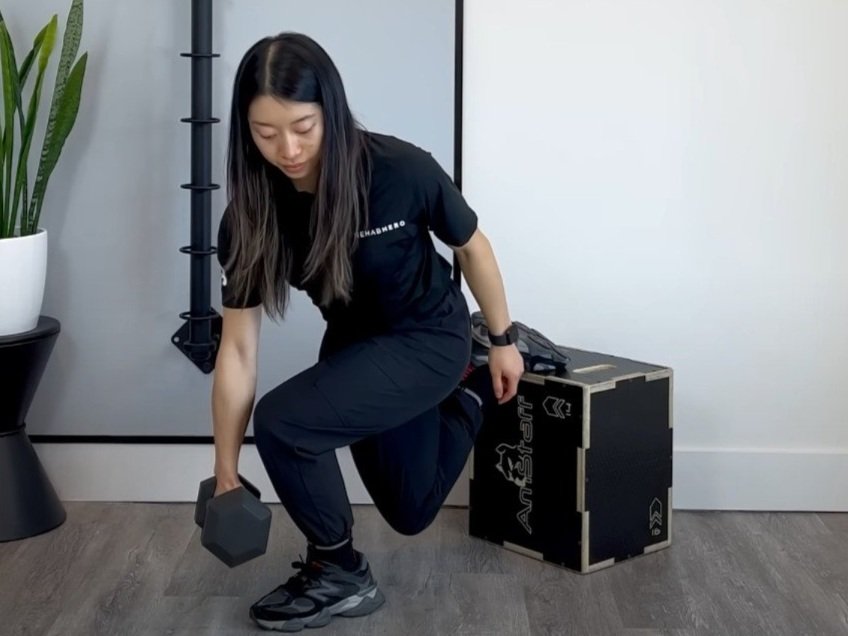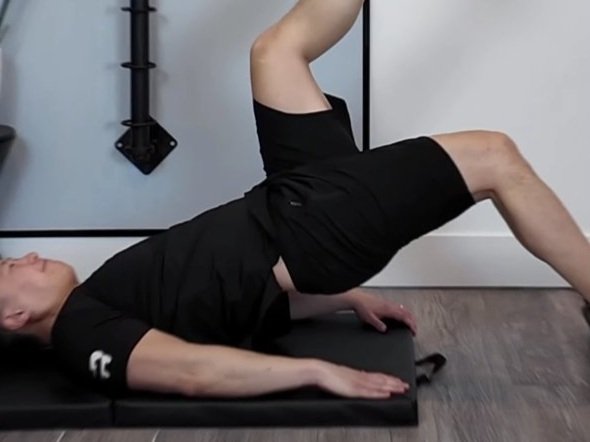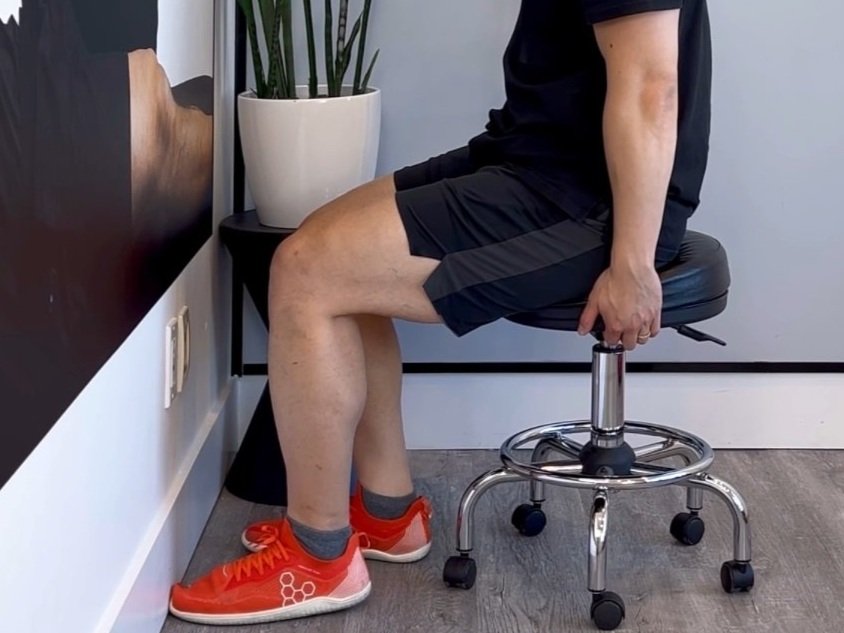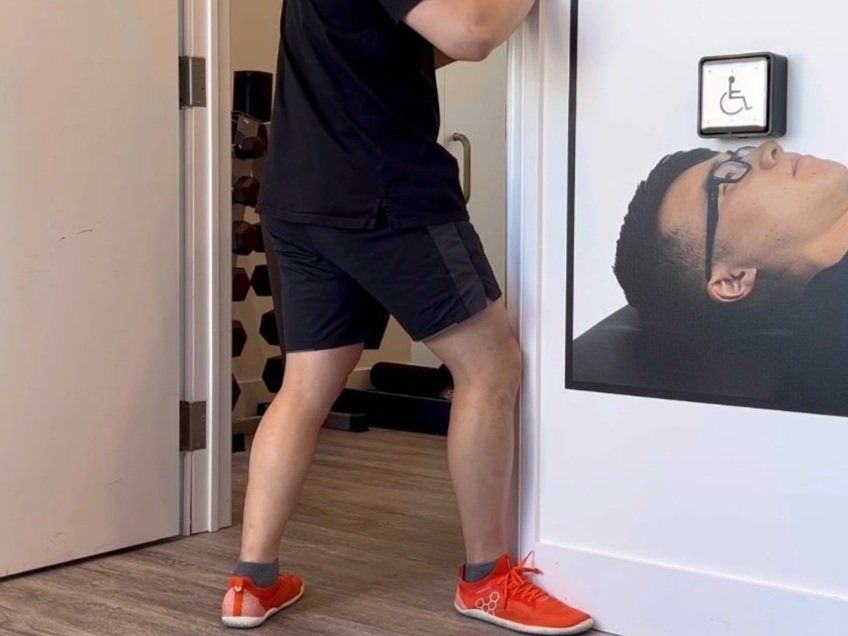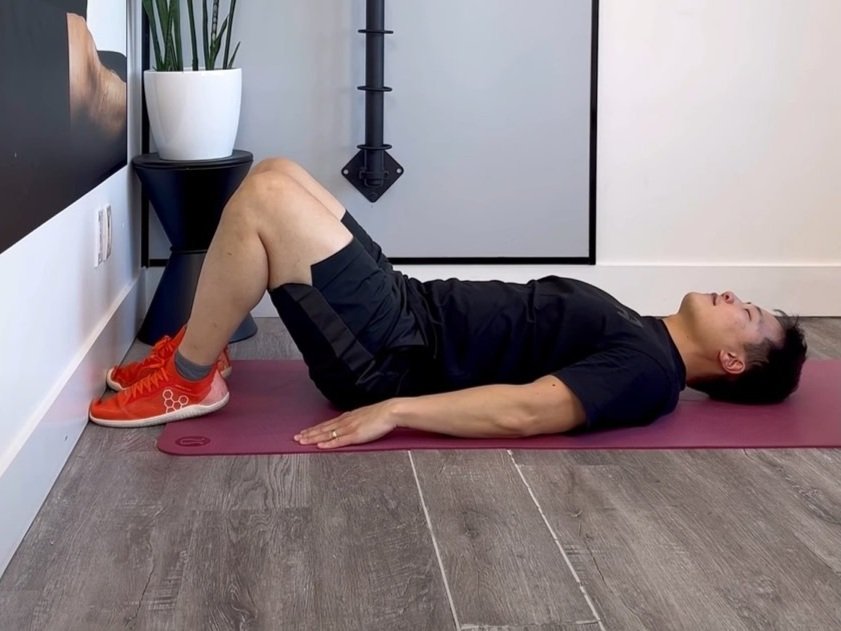Chondromalacia Patella Review
Chrondomalacia Patella As A Cause for Knee Pain
Learn about this condition & which options you have for recovery
What is Chondromalacia Patella (CMP)?
Chondromalacia Patella is the softening or wearing down of the articular cartilage on the undersurface of the patella, and may be caused by repetitive motion and misalignment of the kneecap, and is believed to be a result of physical and biomechanical changes in the joint. However, it is still poorly understood how this pathomechanism causes pain in CMP.
Misalignment of the patella can be due to various reasons which include congenital defects, weakness in the quadriceps, muscle strength imbalance between the medial and lateral thigh, and direct trauma. Abnormal tracking of the patella is also a proposed cause of this condition, and would be due to strength differences between the vastus lateralis and vastus medialis oblique (causing lateral tracking of the patella).
Abnormal tracking may also be due to patellofemoral instability, with 95% of patients who experienced patellar dislocations reporting chondral defects.
Who is Most Affected by CMP?
This condition is most common in adolescence (females especially) and in young adults. It also occurs in patients over 40 years due to articular cartilage breakdown due to wear and tear.
What are the Risk Factors?
Increased risk is also associated with activities that include running, skiing, cycling, soccer, or recent increase in training intensity or duration. In athletes, increased risk is associated with shortened quadriceps muscles, altered VMO reflex response time, and decreased explosive strength.
Abnormal biomechanics that are risk factors include excessive pronation of the foot, femoral anteversion, patella alta, relative instability of the patella, increased Q angle, and tibial tubercle lateralization and patellar tilt (MRI).
What are the Symptoms of Chondromalacia Patella?
Symptoms include acute/ chronic knee pain that increases slowly over time, popping/cracking noise with knee flexion/extension, pain with stair climbing/ squatting/ kneeling/ running, and pain/stiffness in the knee after prolonged flexion.
Advanced imaging in the form of x-ray, MRI, or Arthroscopy can be used to confirm this diagnosis in those with Patellofemoral Pain Syndrome. There is also a strong positive association between subcutaneous knee fat as a marker of obesity and the presence and severity of CMP on MRI.
Which Tests are Used for this Condition?
Special tests for CMP include:
Increased Q angle
Clarke’s test (however it is currently unsupported for the diagnosis of CMP, a positive test may not be associated with CMP and can be positive in asymptomatic individuals)
Patellar tilt test (inability to lift lateral side to at least 15 degrees, common in PFPS)
Patellar glide test (limited medial glide)
Apprehension test for patellar dislocation (low specificity of 39%)
Tegner scores for activity levels
International knee documentation committee (IKDC) subjective knee form.
These tests can be completed by your local chiropractor or physiotherapist. An Initial Assessment is used to assess the condition of the knee, the quality of your movement patterns and to rule in or out other conditions that present similarly. You can book in with a Rehab Hero health care provider by using the button below
Which Treatments Work for CMP?
Conservative management options include a combination of:
Relative rest (avoid aggravating activities) and restoration of normal alignment and soft tissue balance.
Exercises include flexibility training for quadriceps, hamstrings, ITB, and strengthening of hip abductors, external rotators, and quadriceps.
Taping and bracing can be used to provide pain-free exercising.
Gait training can be used to target deviations such as in-toeing and excessive pronation.
Passive care include patellar mobilizations.
Short and closed chain strengthening exercises (half squat) prevents loading of cartilage defects, and are more effective at reducing Q angle and crepitus, and increasing thigh circumference and maximal voluntary isometric force of quadriceps than open kinetic chain exercises. Patients with improved muscle strength were able to resume sport activities within 1 month.
Passive treatments such as patellar mobilizations or quadriceps myofascial release can be completed by your local massage therapist, physiotherapist, or chiropractor. Other modalities may be used such as acupuncture, cupping, or shockwave to reduce pain or to treat co-existing knee injuries. Active care treatments including strengthening, stretching or mobility training may also be included in your physiotherapy, chiropractic or massage therapy treatments for long term results. You can book in an appointment with a Rehab Hero health professional by clicking the button below.
Do I need Surgery for my CMP?
Generally surgical treatment is only used when conservative management (supportive care, 85% improve with physiotherapy and require no further treatment) has failed (no improvement after 3-6 months).
Postoperative rehabilitation include a progression through 4 phases according to achievement-based criteria.
Phase 1: Protection of the transplant and recovery of normal gait
Phase 2: Cartilage transition and recovery of a correct run
Phase 3: Cartilage maturation and recovery of sport-specific skills
Phase 4: Cartilage turnover and maintaining - maintenance of physical fitness and prevention of risk of reinjury.
Postoperative rehabilitation can be completed with your physiotherapist or sports chiropractor directly. In Ontario, no referral note is required by your medical doctor to consult these health care professionals.
What are my Other Medical Treatment Options?
Commonly used medications that are used include NSAIDs and analgesics (acetaminophen) for short-term relief.
Corticosteroid injections are sometimes used but there is some evidence that support that they contribute to necrosis of the cartilage. Prognosis is poor unless activity levels are addressed.
Written By:
Dr. David Song, Rehab Hero Founder, Chiropractor, Strength Coach
References
1. Alan R. Chondromalacia Patella. Rehabilitation Reference Center (RRC) [serial on the Internet]. (2016, Feb), [cited November 5, 2017]; Available from: Rehabilitation Reference Center.
2. Palmer E. Chondromalacia Patella. CINAHL Rehabilitation Guide [serial on the Internet]. (2016, Sep 16), [cited November 5, 2017]; Available from: Rehabilitation Reference Center.
3. Bakhtiary A, Fatemi E. Open versus closed kinetic chain exercises for patellar chondromalacia. British Journal Of Sports Medicine [serial on the Internet]. (2008, Feb), [cited November 5, 2017]; 42(2): 99-102. Available from: CINAHL Plus with Full Text.













